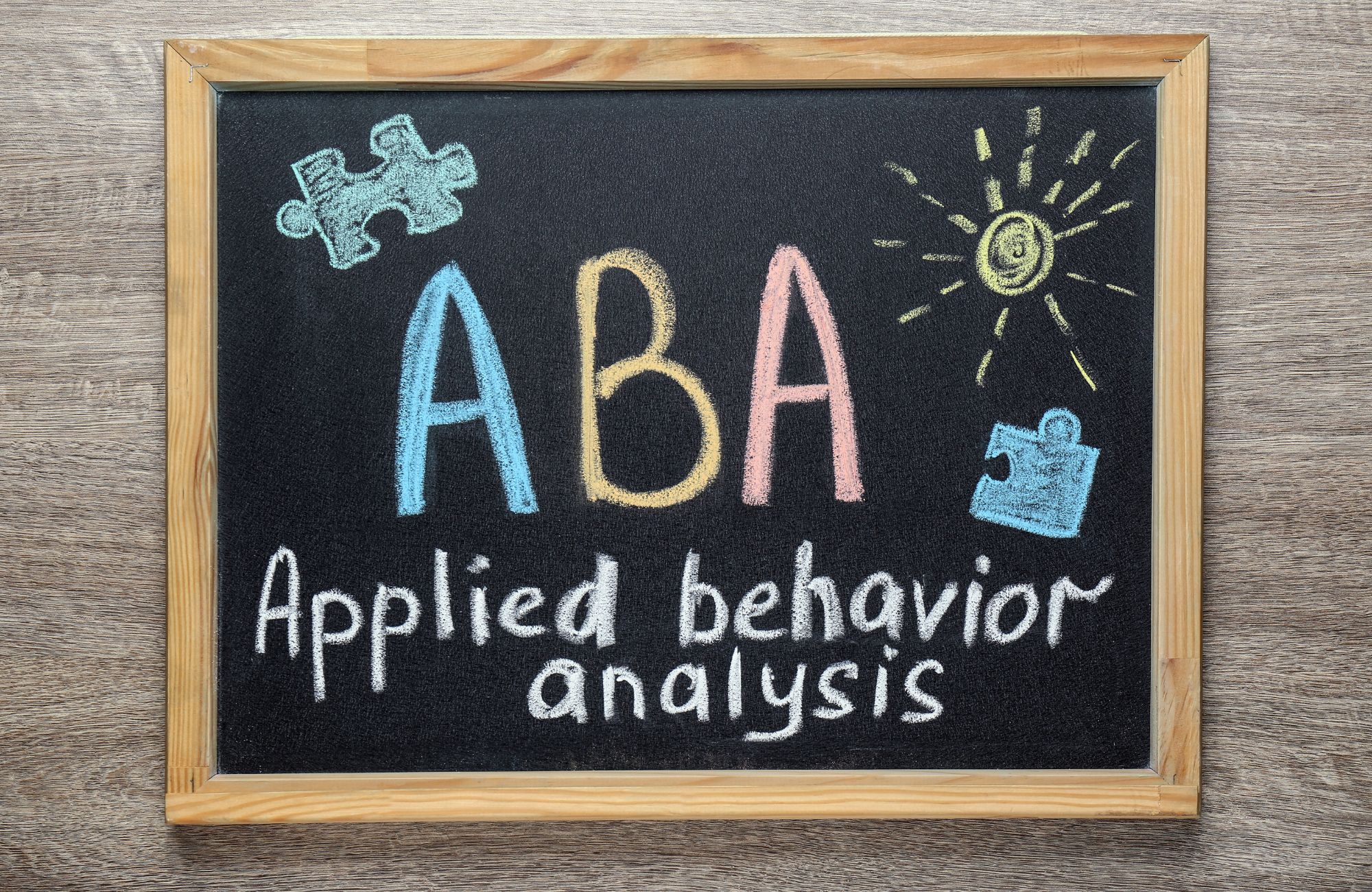Advantages of Applied Behavior Analysis in a Classroom
The educational landscape has evolved significantly, with educators increasingly turning to evidence-based methods like Applied Behavior Analysis (ABA) to enhance learning for all students. Originally developed to address behavioral challenges in children with autism spectrum disorder, ABA has expanded into mainstream education, revolutionizing instruction, behavior management, and skill development. Let’s dive into the topic: Advantages of Applied Behavior Analysis in a Classroom.
Rooted in the science of how behavior is influenced by the environment, ABA focuses on improving socially significant behaviors through structured, data-driven interventions. When applied in classrooms, it creates supportive environments that promote academic success and positive social interactions for diverse learners. These advantages of Applied Behavior Analysis in a classroom make it a valuable tool for fostering meaningful progress and inclusive education.
Understanding Applied Behavior Analysis in Education
The Science Behind ABA
Applied Behavior Analysis (ABA) Therapy is grounded in the science of learning and behavior, with decades of research supporting its effectiveness. In education, this evidence-based approach helps ensure measurable progress. Using functional behavior assessments, educators can identify the relationship between behavior and the environment through the ABC model (Antecedent Behavior Consequence). This process reveals what triggers and reinforces specific behaviors, allowing teachers to develop targeted interventions that address challenges and promote successful learning.
From Therapy Centers to Classrooms
Though often linked to autism therapy, ABA has grown into a flexible teaching framework used across diverse classroom settings. Rather than a rigid program, it offers adaptable strategies that support all students by promoting positive, consistent learning environments. By understanding how behavior is learned and maintained, educators can boost engagement, motivation, and skill development for every child, not just those with developmental disabilities.
Key Advantages of ABA in Classroom Settings
Academic Benefits
ABA enhances academic skills and performance by breaking complex skills into manageable steps and using data-driven instruction to monitor progress and adjust teaching in real-time. This structured approach is especially effective in reading, math, and writing. Instead of relying on end-of-unit assessments, teachers provide immediate feedback and targeted support. Classrooms using ABA often see improvements in on-task behavior, assignment completion, skill retention, and independent work habits.
Behavioral Benefits
Applied Behavior Analysis (ABA) equips educators with proactive, systematic strategies to manage classroom behavior by reducing disruptions and promoting positive participation. Instead of relying on reactive discipline, ABA emphasizes understanding the function of behavior and teaching appropriate alternatives. Through positive reinforcement, teachers encourage desired behaviors, fostering a supportive and motivating classroom environment. By setting clear expectations and consistent consequences, ABA also helps students develop essential self-regulation skills, emotional awareness, and social understanding, which are key foundations for success both in and out of the classroom.
Social and Emotional Benefits
Beyond academics and behavior management, Applied Behavior Analysis (ABA) plays a vital role in supporting students’ social development, especially for those with autism or social communication difficulties. ABA provides structured, real-life opportunities for students to learn and practice key social skills, helping them navigate interactions more effectively.
Using techniques like peer-mediated interventions and social skills groups, students build essential abilities such as initiating conversations, taking turns, recognizing emotions, resolving conflicts, and collaborating with others. These skills not only improve classroom dynamics but also prepare students for meaningful relationships outside of school. By fostering social growth in a systematic way, ABA promotes inclusive environments where all students feel connected and supported.
Core ABA Techniques and Their Classroom Applications
Positive Reinforcement Strategies
Positive reinforcement forms the foundation of successful ABA implementation. This approach involves providing something desirable—praise, privileges, or tangible rewards—following a target behavior to increase its future occurrence. Unlike bribes, which are provided before a behavior occurs, reinforcement strengthens already demonstrated positive actions.
Effective classroom reinforcement systems include:
| Type |
Examples |
Best Used For |
| Social reinforcers |
Praise, high-fives, positive attention |
Building internal motivation |
| Activity reinforcers |
Special jobs, extra computer time, choice time |
Encouraging completion of non-preferred tasks |
| Token systems |
Points, stickers, classroom currency |
Teaching delayed gratification and working toward goals |
| Group contingencies |
Class rewards, team recognition |
Fostering cooperation and peer support |
For reinforcement to be most effective, it must be immediate, consistent, and meaningful to the student. Teachers should consider individual preferences when selecting reinforcers and gradually fade external rewards as behaviors become habitual.
Structured Teaching Approaches
ABA encompasses several structured teaching methods that enhance skill acquisition in classroom settings. These techniques can be adapted for various subjects and developmental levels:
- Discrete Trial Teaching (DTT): Breaks skills into small steps with immediate feedback through brief, focused practice. Useful for teaching basics like letter sounds or math facts.
- Naturalistic Teaching: Uses everyday activities and student interests to teach skills in real-world contexts, like using a love of dinosaurs to teach vocabulary or counting.
- Pivotal Response Training (PRT): Targets key skills like motivation and communication to improve multiple areas, such as encouraging question-asking to boost engagement.
- Task Analysis: Breaks complex tasks into small steps taught in sequence, using tools like checklists to build independence in multi-step academic activities.
Behavior Management Systems
Effective classroom management is essential for creating productive learning environments. ABA offers systematic approaches to addressing behavioral challenges while promoting positive interactions:
- Token Economy Systems: Students earn tokens for positive behavior and trade them for rewards, teaching delayed gratification and choice-consequence connections.
- Contingent Observation: Disruptive students briefly watch peers participate, then rejoin once ready, offering a natural, less intrusive consequence.
- Antecedent-Based Interventions: Modify triggers in the environment like seating or task difficulty to prevent challenging behaviors before they start.
- Visual Support Systems: Use visual tools like schedules and behavior charts to support routines, transitions, and independence.
By implementing these structured systems, educators create predictable environments where students understand expectations and receive consistent feedback, enhancing both behavioral and academic outcomes.
Implementing ABA Across Different Educational Contexts
General Education Classrooms
Applied Behavior Analysis (ABA) principles benefit all students in general education by supporting diverse learning needs and promoting positive behavior. Effective teachers use ABA strategies such as clearly posted expectations, consistent routines with cues, strategic seating, active student engagement, frequent specific praise, and structured peer interactions. These practices foster a supportive classroom environment that reduces behavioral challenges and enhances learning for every student.
Special Education Settings
In special education settings, ABA principles are applied more intensively to meet individual learning and behavioral needs, especially for students with autism and developmental disabilities. Educators use structured strategies to build communication, reduce challenging behaviors, and support academic and functional growth, often relying on detailed data to guide individualized interventions. Tools like the Picture Exchange Communication System (PECS) and behavior intervention plans are common, and collaboration with board-certified behavior analysts ensures consistent, effective implementation tailored to each student’s progress.
Inclusive Classroom Environments
Inclusive education supports all learners in general education settings, and ABA principles enhance this by providing structured frameworks for differentiation and meaningful participation. Educators use multi-tiered supports, peer-mediated strategies, environmental modifications, visual aids, and collaborative teaching to meet diverse needs. These ABA-informed approaches help create classrooms where all students are actively engaged, supported, and included, not just present.
Creating an ABA-Supportive Classroom Environment
Physical Environment Considerations
The physical layout of a classroom plays a crucial role in shaping student behavior and learning. ABA-informed design focuses on minimizing distractions, promoting independence, and encouraging positive interactions. Key features include clearly defined activity areas, organized and labeled materials, integrated visual supports, sensory-friendly elements like lighting and noise control, and strategic seating arrangements. These environmental supports increase predictability, reduce anxiety, and help students focus more on learning and less on navigating the space.
Social Environment Elements
The social climate of a classroom greatly influences student engagement and behavior, and ABA principles guide educators in building supportive structured environments where positive interactions are taught and reinforced. Strategies such as modeling appropriate social behaviors, structuring peer collaboration, reinforcing positive interactions, creating peer support systems, and using social narratives help all students, especially those with social skill challenges, develop essential interpersonal skills. This foundation supports both academic success and long-term independence.
Instructional Environment Components
Instructional delivery has a major impact on student engagement and learning, and ABA principles guide practices that provide clear expectations, appropriate challenges, and continuous feedback. Key strategies include differentiated instruction, explicit teaching of expectations, frequent opportunities for active participation, immediate and specific feedback, strategic prompting with fading, and regular progress monitoring. These methods support all learners, especially those with learning differences, by creating structured, responsive environments that promote meaningful growth and success.
Measuring Success: Data Collection and Progress Monitoring
A key strength of ABA in education is its focus on data-driven decision-making, using objective data to guide interventions and adjust teaching based on real student performance rather than assumptions.
- Effective Data Collection Systems: Simple tools like frequency counts, ABC charts, and digital apps help track progress efficiently without disrupting instruction. The focus is on choosing practical, relevant methods.
- Analyzing and Using Behavioral Data: Regular data review helps educators spot patterns, adjust strategies, and communicate clearly, making teaching more targeted and effective.
Collaboration and Implementation Strategies
Team Approach to ABA
Successfully implementing ABA in educational settings requires collaboration among various professionals, each bringing unique expertise to support student success. This team typically includes:
- Classroom teachers who implement daily strategies and collect ongoing data
- Board-certified behavior analysts who design specialized interventions
- School psychologists who contribute assessment expertise
- Administrators who support systems-level implementation
- Related service providers who address specific developmental needs
Effective teams establish clear communication systems, meet regularly to review progress and maintain consistent approaches across different settings. This collaborative model ensures that interventions are comprehensive and coordinated, maximizing their impact on student development.
Parent-School Partnerships
Parents play a vital role in reinforcing ABA strategies at home, creating consistency that supports faster progress. Effective school-family partnerships involve regular data sharing, parent training, clear communication about goals, and coordinated approaches across settings. By working together, educators and families provide children with consistent, comprehensive support that strengthens skill development beyond the classroom.
Conclusion: Advantages of Applied Behavior Analysis in a Classroom
Applied Behavior Analysis offers powerful tools for enhancing learning, communication, and behavior in classroom settings. When applied effectively, ABA helps create structured, inclusive environments where all students, not just those with autism, can thrive. With its data-driven strategies and focus on individualized support, ABA empowers educators to address behavioral challenges, improve academic outcomes, and foster lasting social skills.
At Affinity ABC, we are proud to support schools across New Mexico with compassionate, evidence-based ABA therapy. Our school-based programs meet students where they are, right in their classrooms, through close collaboration with teachers, school staff, and families. Whether you are a parent, teacher, or school administrator, Affinity ABC is here to help your students succeed. Contact us today to learn how we can bring effective, collaborative ABA support to your school.
FAQs: Advantages of Applied Behavior Analysis in a Classroom
What are the benefits of ABA in the classroom?
ABA improves academic performance, reduces disruptive behaviors, enhances communication skills, and supports social development through structured learning environments with clear expectations and consistent positive reinforcement.
How can applied behavior analysis be used in the classroom?
Teachers can implement ABA in school settings through positive reinforcement strategies, token economies, discrete trial teaching, visual supports, and structured routines that address individual needs while collecting data to monitor progress.
What is the purpose of applied behavior analysis?
The purpose of ABA is to understand and improve socially significant behaviors by analyzing the relationship between behavior and environment to develop targeted, evidence-based teaching strategies.
What are the benefits of behavioral learning?
Behavioral learning provides clear goals, consistent feedback, and structured support that helps students develop self-regulation, independence, and motivation while building academic and social skills.









